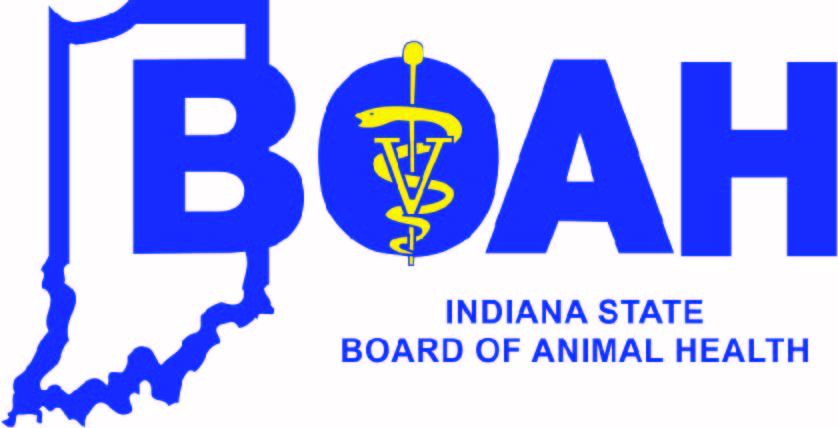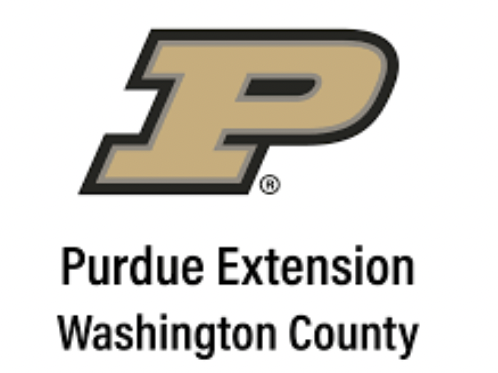
|
The Indiana State Department of Agriculture (ISDA) and the Indiana State Soil Conservation Board SSCB) announced that 16 soil and water conservation districts and one organization were awarded over $1.3 million in Clean Water Indiana competitive grant funding. This funding will support water quality improvements across the state. Washington County SWCD- $224,200 |
ABOUT ISDA The Indiana State Department of Agriculture (ISDA) reports to Lt. Governor Micah Beckwith, Indiana’s Secretary of Agriculture and Rural Development. Major responsibilities include advocacy for Indiana agriculture at the local, state and federal level, managing soil conservation programs, promoting economic development and agricultural innovation, serving as a regulatory ombudsman for agricultural businesses, and licensing grain firms throughout the state. |

|
||||||||
|
||||||||
|

BOAH Quarterly Lunch-and-Learn
Thursday, February 27, 2025 at Noon (Eastern)
The Indiana State Board of Animal Health (BOAH) continues the quarterly lunch-and-learn webinar series with a second offering in February focused on highly pathogenic avian influenza (HPAI) away from the farm. BOAH's partners at Indiana Department of Health and Indiana Department of Natural Resources will join us to discuss human health issues and how the disease is impacting wild birds.
The one-hour session is offered free to the public via MS Teams. The webinar will be recorded and posted to BOAH’s YouTube channel at a later date.
Veterinarians and registered veterinary technicians who participate can earn 1 hour of continuing education credit.
Thursday, February 27 @ Noon Eastern
The Indiana State Board of Animal Health is hosting a second webinar this month to address HPAI-related issues beyond the farm to include helpful information from two of the agency’s state partners:
- Indiana Department of Natural Resources Fish and Wildlife Health Biologist Eli Fleace will share insights about how HPAI is impacting wild birds in Indiana and beyond.
- Indiana Department of Health’s Dr. Eric Hawkins, state epidemiologist, and Dr. Jennifer Brown, state public health veterinarian, will share information about what citizens should know about HPAI and human health.
Participants are invited to submit questions related to human health and/or wild birds before the webinar to:
To register:
https://events.gcc.teams.microsoft.com/event/b225db7a-29c7-4e0d-be8a-d3d8f56bffd9@2199bfba-a409-4f13-b0c4-18b45933d88d
Participants may register up to the start of the webinar,
but must allow time to receive the email with the access link.

In honor of National FFA Week, the seven Indiana FFA State Officers met in the Statehouse to receive a proclamation and resolution declaring Feb. 15-22 FFA Week.
“Indiana FFA and their membership embodies agriculture, youth education and development like no other organization,” said Lt. Gov. Micah Beckwith, Indiana’s Secretary of Agriculture. “It was a pleasure to have these outstanding young professionals representing the State of Indiana and agriculture so well in the Statehouse today and I look forward to celebrating FFA Week with them.”
Gov. Mike Braun signed a proclamation to name this week FFA Week in recognition of all the work the Indiana FFA Organization, agriculture educators and FFA advisors do to cultivate the next generation of agriculturists for the state.
During the week, chapters across the state and nation will host a variety of events to educate, advocate and celebrate the agricultural industry. From community service projects to a farmer’s breakfast, these activities pay homage to the dedication and commitment of today’s agriculturalists. Throughout the week, the Indiana FFA State Officers will travel the state to participate in activities alongside local FFA chapters and their communities.
The Indiana FFA Association also received a Senate Concurrent Resolution highlighting the impact of the FFA Organization, which is preparing more than 14,000 members in 90 of Indiana’s 92 counties for the over 250 unique careers in the food, fiber and natural resource sectors. The resolution was led by Sen. Jean Leising, Senate District 42 and Rep. Michael Aylesworth, House District 11.
Indiana FFA State Reporter Sienna Alexander, hailing from the Monrovia FFA Chapter, was excited to meet with legislators to promote Indiana agricultural education.
“FFA week is an wonderful opportunity for community members to learn more about the FFA organization and experience ag education and leadership development firsthand,” said Alexander. “My fellow officers and I love this week because we get to travel across the state and meet new members while also learning about and participating in their FFA week traditions.”
FFA members are agriculture’s future leaders, future food suppliers, future innovators and more! Whether it is through service projects or community gatherings, FFA Week is a time for FFA members to raise awareness about agricultural education and the role the FFA Organization plays in the development of agriculture's future leaders.
The first National FFA Week was held in 1948, when the National FFA Board of Directors designated a weeklong celebration to recognize George Washington’s example and legacy as a leader and farmer. For the past 77 years, FFA members across the country have taken part in agricultural, leadership and service-based activities during National FFA Week.
Visit www.inffa.org to learn more about Indiana FFA.

Pictured above is the 2024-25 Indiana FFA State Officer Team. From left to right: Stephanie Berenda, Northern Region Vice President (South Newton FFA Chapter), Cale Williams, Southern Region Vice President (Terre Haute South FFA Chapter), Sienna Alexander, Reporter (Monrovia FFA Chapter), Garrett Bolin, Sentinel (Indian Creek FFA Chapter), Christina Caldwell, Secretary (Connersville FFA Chapter), Ethan Wolheter, President (Prairie Heights FFA Chapter), Kyatalin Baker, Treasurer (Switzerland County FFA Chapter).
SalemLeader.com
Leader Publishing Company of Salem, Inc.
P.O. Box 506
117-119 East Walnut Street
Salem, Indiana. 47167
Phone: 812-883-3281 | Fax: 812-883-4446
Business Hours:
Mondays through Fridays, 9:00am - 5:00pm
News:
news@salemleader.com
Office:
office@salemleader.com
Publisher:
publisher@salemleader.com
Business
- More Business News
- Go To Guide
- Business Directory
- Auctions
Education
- More Education News
Opinion
- Editorials
- Letters to the Editor
- Columns
- Unsung Heroes
- Days Gone By
- In the Garden
- Guest Columns
- Reader's Poll
- Salem Leader Forum
- Questions and Answers
Church
- Bible Aerobics
- Church News
- Church Directory




